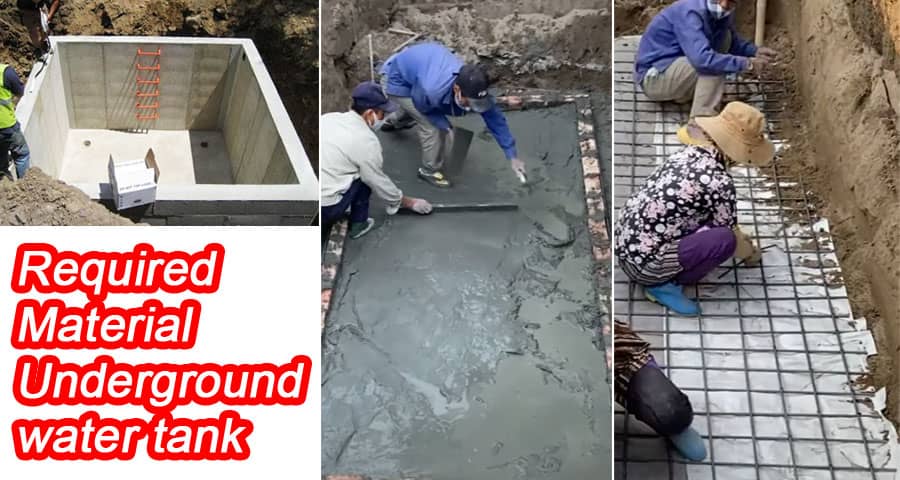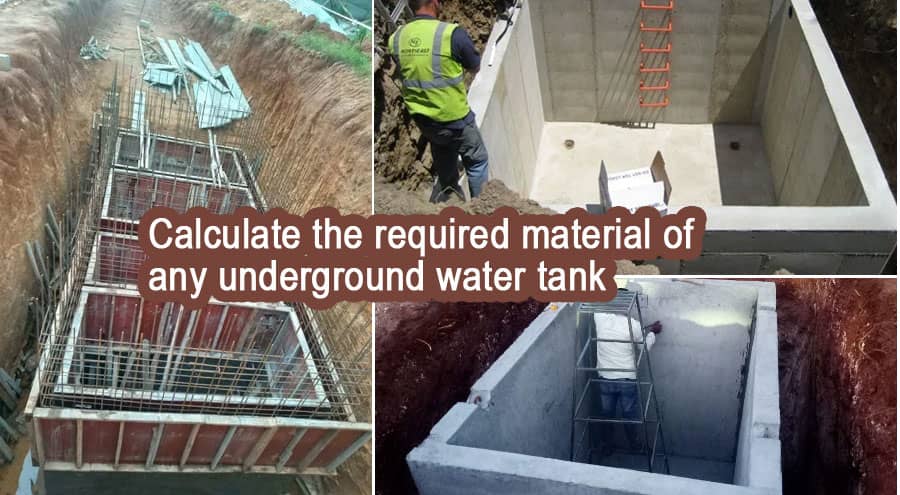How to calculate the required material of any underground water tank

If you are planning to install an underground water tank, it is crucial to know how much material you will need to construct it. Calculating the required material for an underground water tank can be a complicated task, but it is essential to ensure that the tank will be durable and meet your water storage needs.
Step 1: Determine the Size and Shape of the Tank
Before you can calculate the required material for your underground water tank, you need to determine its size and shape. The size and shape of the tank will depend on the amount of water you want to store and the available space. There are various shapes and sizes of tanks, including round, rectangular, and square. Once you have determined the shape and size of the tank, you can move on to the next step.
Step 2: Calculate the Required Volume of the Tank
To calculate the required material for the tank, you need to know the required volume of the tank. The required volume of the tank will depend on the amount of water you want to store. To calculate the required volume of the tank, you can use the following formula:
Volume of Tank = Length x Width x Height
For example, if you want to store 10,000 liters of water and have decided to build a rectangular tank that is 2 meters wide, 3 meters long, and 2 meters high, the volume of the tank will be:
Volume of Tank = 2 x 3 x 2 = 12 cubic meters
Step 3: Choose the Material for the Tank
The next step is to choose the material for the tank. Underground water tanks can be made from various materials, including plastic, fiberglass, and concrete. Each material has its advantages and disadvantages, and the choice will depend on your budget, water storage needs, and other factors. For instance, plastic tanks are lightweight, easy to install, and require minimal maintenance. On the other hand, concrete tanks are durable, long-lasting, and can withstand extreme weather conditions.
Step 4: Calculate the Required Material for the Tank
Once you have determined the required volume of the tank and chosen the material, you can calculate the required material for the tank. The amount of material required will depend on the thickness of the walls and the base of the tank. To calculate the required material, you can use the following formula:
Material Required = Volume of Tank x Thickness
For example, if you have decided to build a concrete tank with a wall thickness of 150mm and a base thickness of 200mm, the required material will be:
Material Required = 12 x 0.35 = 4.2 cubic meters

Conclusion
Calculating the required material for an underground water tank can be a challenging task, but it is essential to ensure that the tank will be durable and meet your water storage needs. The steps involved in calculating the required material include determining the size and shape of the tank, calculating the required volume, choosing the material, and calculating the required material. By following these steps, you can ensure that your underground water tank is built correctly and will last for many years.
FAQs
How deep should an underground water tank be?
The depth of an underground water tank should be at least 1 meter to prevent contamination and maintain water quality.
Can I build an underground water tank myself?
It is possible to build an underground water tank yourself, but it is recommended to hire a professional to ensure that the tank is built correctly and meets local building codes.
How long will an underground water tank last?
The lifespan of an underground water tank depends on the material used, the quality of installation, and the maintenance provided. A properly installed and maintained tank can last for many years.
Do I need a permit to install an underground water tank?
Yes, you may need a permit to install an underground water tank. The requirements for a permit may vary depending on your location and the size and type of the tank.
Can I use an underground water tank for drinking water?
Yes, underground water tanks can be used for drinking water. However, it is essential to ensure that the tank is made of food-grade materials and that the water is regularly tested for quality and safety.
Please watch the following short video How to calculate the required material of any underground water tank
